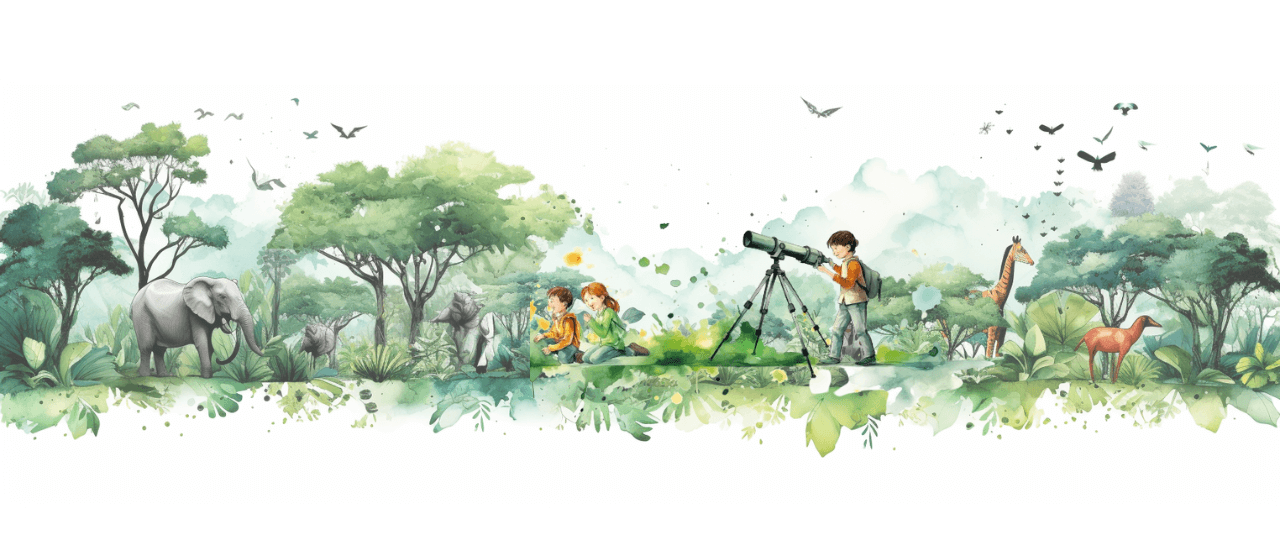Asia has incredible natural and scientific diversity and offers a perfect setting for children to explore and learn. This vast continent, with its varied landscapes and advanced scientific centers, provides an ideal playground for young minds to discover the wonders of nature and the excitement of science. Emphasizing nature and science education is crucial in fostering children’s curiosity, imagination, and a love for learning. Engaging with Asia’s rich environments and innovative science hubs can inspire a new generation of thinkers and explorers. “Nature and Science Exploration Fun for Kids in Asia” is more than just an exploration—it’s an adventure that blends education and enjoyment, opening doors to a world of discovery.
Natural Wonders: Exploring the Jungles
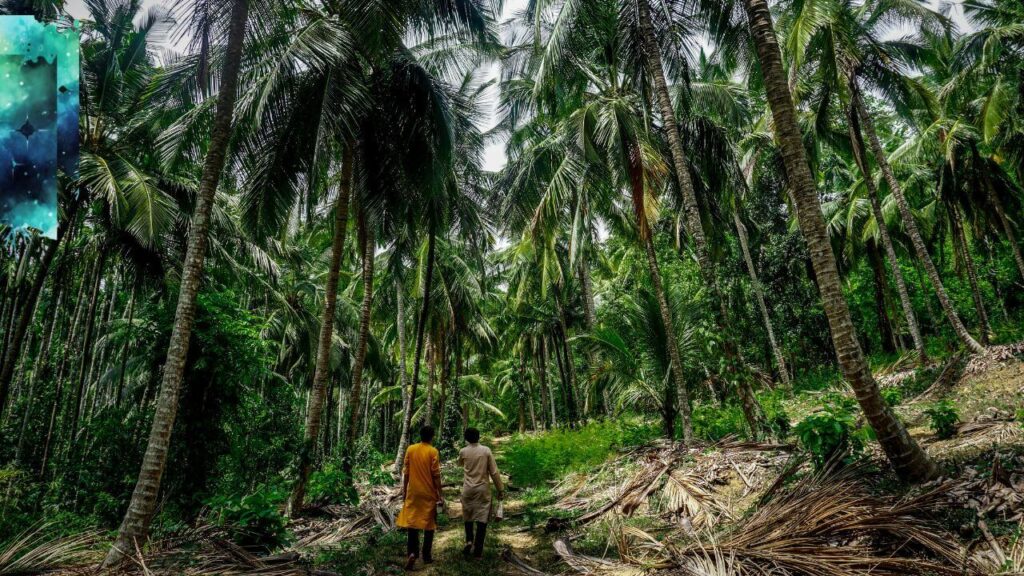
Jungles in Asia offers a unique blend of adventure and education, immersing kids in the beauty and complexity of tropical ecosystems.
Wildlife Safaris: Guided tours in the jungle where kids can observe animals in their natural habitat.
Nature Trails: Walking paths, such as canopy walks, offer close-up views of the rainforest’s diverse flora and fauna.
Educational Workshops: Activities focused on rainforest ecology and the importance of conservation.
Where to Go
Borneo (Malaysia and Indonesia)
Known for its dense rainforest and the famous orangutan rehabilitation centers, Borneo is also a haven for myriad other species like the pygmy elephant and clouded leopard. Its rich cultural heritage, represented by numerous indigenous tribes, adds another layer to the exploration experience.
Khao Yai National Park (Thailand)
A UNESCO World Heritage site, Khao Yai National Park is celebrated for its rich biodiversity, including elephants and exotic birds, and also features majestic waterfalls and numerous hiking trails. The park is a haven for nature enthusiasts and offers educational programs on wildlife conservation.
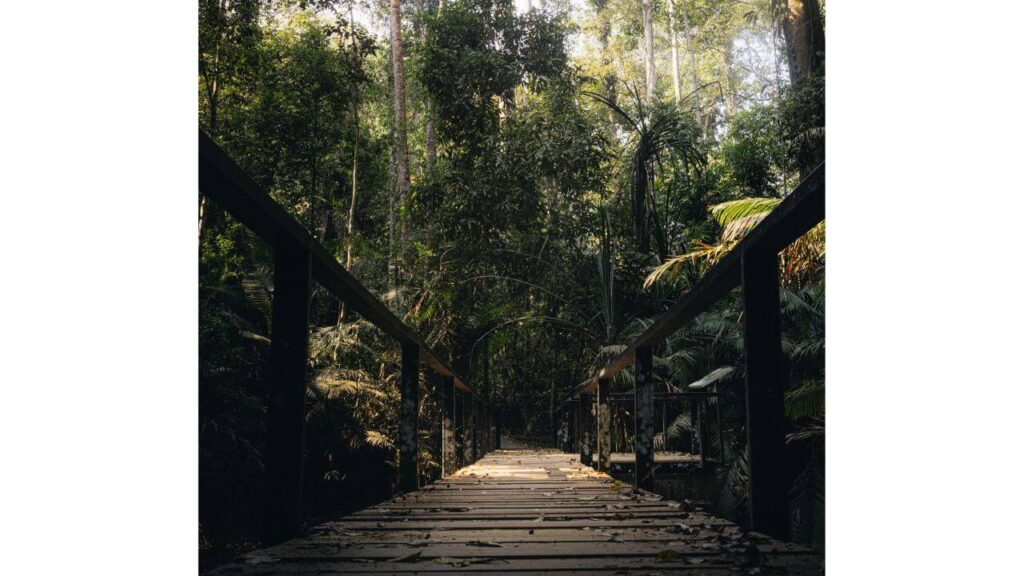
Taman Negara (Malaysia)
One of the world’s oldest rainforests, Taman Negara offers canopy walks and river cruises, providing a unique perspective on the ancient ecosystem. It is rich in biodiversity and offers opportunities for cave exploration and a chance to learn about the indigenous Orang Asli culture.
Sinharaja Forest Reserve (Sri Lanka)
A biodiversity hotspot ideal for birdwatching and spotting endemic wildlife, Sinharaja Forest Reserve is a UNESCO World Heritage site. The forest is dense and verdant, allowing visitors to experience an ancient rainforest and learn about its complex ecology.
The Western Ghats (India)
Known for its unique ecosystems and numerous wildlife sanctuaries, the Western Ghats are also recognized as a UNESCO World Heritage site. This mountain range is a hotspot of endemic plants and animals, providing an unparalleled experience of India’s natural heritage and biodiversity.
These destinations provide a mix of adventure and education, allowing kids to experience the wonders of the jungle while learning about the importance of preserving these unique ecosystems.
Beaches and Marine Life are part of Nature and Science Exploration in Asia
Asia’s coasts and oceans provide children with an interactive platform to learn about marine biology and conservation.
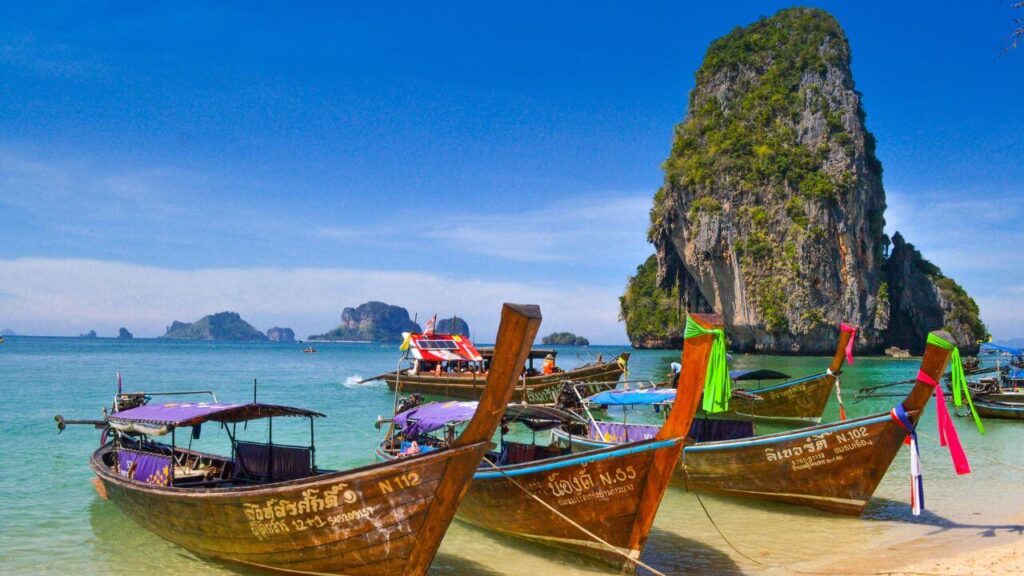
Coastal Ecosystems and Marine Biology for Kids
Educational Tours: Guided beach and snorkeling tours that teach children about marine ecosystems, coral reefs, and marine wildlife.
Interactive Marine Biology Workshops: Hands-on activities like tide pool exploration and beachside classes focusing on marine life and ecosystems.
Fun Beach Activities and Conservation Efforts
Beach Clean-up Drives: Engaging children in beach clean-ups to foster a sense of responsibility towards the environment.
Sea Turtle Conservation: Participatory activities in sea turtle hatcheries, where kids can learn about and sometimes help in the release of turtle hatchlings.
Where to Go
Okinawa (Japan)
Renowned for its beautiful beaches and coral reefs, Okinawa offers snorkeling and marine life observation alongside a rich cultural history evident in its unique Ryukyu Kingdom heritage. The islands also host sea turtle conservation programs, providing an educational aspect to beach visits.
Andaman and Nicobar Islands (India)
Known for their pristine beaches and rich marine life, ideal for snorkeling and scuba diving, these islands also offer a glimpse into rare flora and fauna, including mangroves and tropical rainforests. The region’s indigenous tribes add a cultural dimension to its natural beauty.
Nha Trang (Vietnam)
Home to various marine life and coral reefs, Nha Trang provides options for snorkeling and educational marine parks. It’s also known for its beautiful bays and the Po Nagar Cham Towers, reflecting the area’s cultural and historical richness.

Bali (Indonesia)
Bali offers a combination of beautiful beaches and opportunities to learn about coral reef conservation. Known for its spiritual and cultural ambiance, Bali also allows visitors to experience traditional dances, temples, and art forms alongside its natural wonders.
Phuket (Thailand)
Popular for its clear waters, vibrant marine life, and interactive environmental conservation programs, Phuket also boasts a rich cultural scene with its Sino-Portuguese architecture and bustling markets. It’s a destination that blends beach relaxation and cultural exploration.
These destinations in Asia provide an excellent opportunity for kids to explore and learn about marine life and coastal ecosystems, all while enjoying fun beach activities and contributing to conservation efforts.
Majestic Mountains and Valleys
The mountains and valleys of Asia offer stunning vistas and a chance for kids to learn about geology and local ecosystems.

Hiking and Exploring Asia’s Mountain Ranges
Family-Friendly Hiking Trails: Many of Asia’s mountain ranges offer trails suitable for families with children, allowing them to experience the beauty and majesty of the mountains safely.
Guided Nature Walks: These provide a great opportunity for kids to learn about the local flora and fauna, with guides often sharing interesting facts and stories about the natural environment.
Where to Go
Himalayas (Nepal and Bhutan)
Home to the world’s highest peaks, the Himalayas offer trekking routes like the Poon Hill trek in Nepal, known for being child-friendly. The region is also rich in cultural heritage, with monasteries, traditional villages, and a deep spiritual ethos that complements its natural majesty.
Mount Fuji (Japan)
Mount Fuji offers guided tours and educational programs, making it a great family destination. Besides its iconic status and scenic beauty, the area around Mount Fuji is rich in cultural experiences, including traditional hot springs and historic shrines.
Huangshan (China)
Known for its scenic beauty and relatively easy walking paths suitable for children, Huangshan (Yellow Mountain) is also celebrated for its sunrise views, ancient pine trees, and its inspiration to Chinese art and literature.
Cameron Highlands (Malaysia)
A family-friendly destination, Cameron Highlands offers easy trails and educational nature programs. The region is also known for its tea plantations, colonial heritage, and the opportunity to learn about local agricultural practices and biodiversity.

Jeju Island (South Korea)
Featuring a volcanic landscape with easy hiking trails for families, including Hallasan Mountain, a UNESCO World Heritage site, Jeju Island also offers unique cultural experiences, such as the traditional Haenyeo (female divers) and beautiful lava tubes.
These destinations in Asia are ideal for introducing children to the wonders of mountainous landscapes, combining physical activity with educational experiences in some of the most breathtaking natural settings on the continent.
Science Museums and Centers
Visiting science museums and centers in Asia can be a fun and enlightening experience for children, sparking their interest in the wonders of science.

Top Science Museums in Asia for Interactive Learning
National Science Museum (Tokyo, Japan): Known for its interactive exhibits on technology, natural history, and environmental science.
Science City (Kolkata, India): A major science center with various interactive exhibits, including a space theater and a digital panorama.
Hong Kong Science Museum (Hong Kong): Features over 500 exhibits, many interactive exhibits, including a popular energy machine.
Petrosains, The Discovery Centre (Kuala Lumpur, Malaysia): An interactive science discovery center focused on the petroleum industry and offering various other scientific exhibits.
Singapore Science Centre (Singapore): Offers hundreds of interactive exhibits across various scientific disciplines, making it a favorite for hands-on learning.

Special Programs and Exhibits for Children
Kids’ Workshops and Science Camps: Many museums offer special programs like workshops, science camps, and holiday events designed for children to engage in hands-on learning.
Interactive and Themed Exhibits: Tailored to ignite curiosity in young minds, these exhibits often include themes like space exploration, robotics, natural history, and environmental science.
Educational Shows and Demonstrations: Regularly scheduled science shows, demonstrations, and planetarium features that are both entertaining and educational.
These science museums and centers in Asia are dedicated to making science fun and accessible for kids. They provide an excellent opportunity for children to learn about various scientific concepts through interactive exhibits and special programs, fostering a love for science in a playful and engaging environment.
Space and Astronomy
Studying space and astronomy in Asia offers kids an extraordinary opportunity to gaze beyond our planet and dream about the cosmos.

Planetarium Visits and Stargazing Events
Hong Kong Space Museum (Hong Kong)
Features a state-of-the-art planetarium with regular shows and stargazing events. The museum is also a hub for educational exhibitions on space science and astronomy, making it a great destination for inspiring young minds about the universe’s wonders.
Nehru Planetarium (Mumbai, India)
It is known for its immersive sky shows and public telescope sessions for stargazing. The planetarium offers educational programs and serves as a cultural space where astronomy is blended with local art and science events, fostering a comprehensive learning environment.
National Astronomical Observatory of Japan (Tokyo, Japan)
Offers public viewing nights and special astronomy events for families. As a leading research institution, it provides a unique opportunity to learn about the latest developments in astronomy and to interact with astronomers and scientists.
Gwacheon National Science Museum (Gwacheon, South Korea)
Houses a large planetarium and hosts various astronomical events. This museum is also known for its wide range of scientific exhibits, including hands-on activities and educational programs covering various science and technology aspects.
Taipei Astronomical Museum (Taipei, Taiwan)
Offers a range of astronomical exhibits and a well-equipped planetarium with regular shows. The museum also features an observatory, interactive exhibits on space exploration, and educational workshops, making it a comprehensive center for astronomical learning.
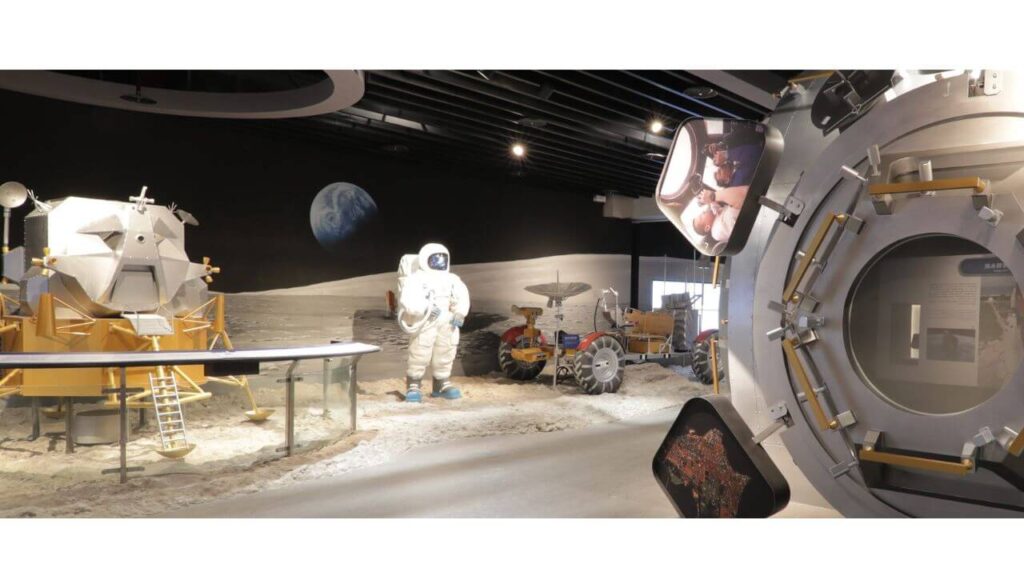
Photo source: Taipei Astronomical Museum
Learn about Space Exploration in Asia
Educational Programs: Many of these centers offer educational programs that introduce children to astronomy and space exploration basics.
Interactive Exhibits: Displays and exhibits often include models of spacecraft, information about the solar system, and the history of space exploration in Asia.
Space Science Workshops: Workshops and activities designed for kids, often including model rocket building, learning about astronauts, and understanding the physics of space travel.
These venues provide an excellent platform for kids in Asia to learn about space and astronomy.
Planetarium visits offer a visually stunning night sky experience while stargazing events allow children to observe celestial objects through telescopes. Educational programs and interactive exhibits at these centers help spark an interest in space exploration and the universe’s wonders.
Interactive and Educational Activities
Engaging in interactive and educational activities provides a hands-on learning approach, making science fun and accessible for kids.

DIY Science Experiments
Simple and Safe Experiments: Activities like homemade volcanoes, density experiments with liquids, or creating a DIY sundial.
Where to Find: Science museums often offer workshops and DIY experiment kits. For example, the Mind Museum in Manila, Philippines, and the Science Centre Singapore often host interactive science workshops where kids can partake in safe and simple experiments.
Nature Crafts and Art
Creative Projects Inspired by Nature: Activities like leaf painting, bird feeders, or creating nature collages.
Where to Do: Nature reserves or botanical gardens often conduct nature craft workshops. Destinations like Gardens by the Bay in Singapore or the Seoul Botanical Park in South Korea offer programs where children can engage in nature-inspired arts and crafts activities.
Games and Apps
Technology and Apps for Nature and Science Learning: Educational apps that teach about wildlife, astronomy, physics, and more.
Where to Find
These can be accessed globally, but tech hubs like Tokyo, Japan, and Bangalore, India, often have tech events or fairs where new educational apps and games are showcased. Additionally, science museums across Asia, like the China Science and Technology Museum in Beijing, may feature interactive technology exhibits where such apps and games can be explored.
These activities offer diverse and engaging ways for kids to learn about science and nature, combining hands-on experience with creativity and technology. Whether through experimenting, crafting, or digital learning, these experiences are designed to spark curiosity and encourage a deeper understanding of the world around them.
Cultural Integration in Nature and Science
Understanding the cultural significance of natural sites and traditional practices enriches the learning experience, connecting science and nature with the rich tapestry of Asian cultures.
Understanding the Cultural Significance of Natural Sites
Many natural sites in Asia hold significant cultural, historical, and spiritual importance. For example, Mount Fuji in Japan is a natural wonder and a cultural icon revered in Japanese art and religion.

Visiting these sites provides an opportunity to learn about the local cultures and their deep connections with their natural environment. This helps in appreciating both the ecological and cultural value of these landscapes.
Traditional Sciences and Natural Practices in Asian Cultures
Traditional Asian cultures have a rich history of scientific knowledge and practices related to nature. For instance, Ayurveda in India and traditional Chinese medicine use natural resources and have evolved through observations of nature and the environment.
Learning about these traditional sciences offers insight into how ancient civilizations used and respected nature and how these practices continue to influence modern science and culture.
Integrating culture into the study of nature and science in Asia offers a comprehensive understanding of how environmental respect and sustainability are deeply embedded in local traditions and practices. It highlights the importance of preserving both the natural environment and its cultural heritage.
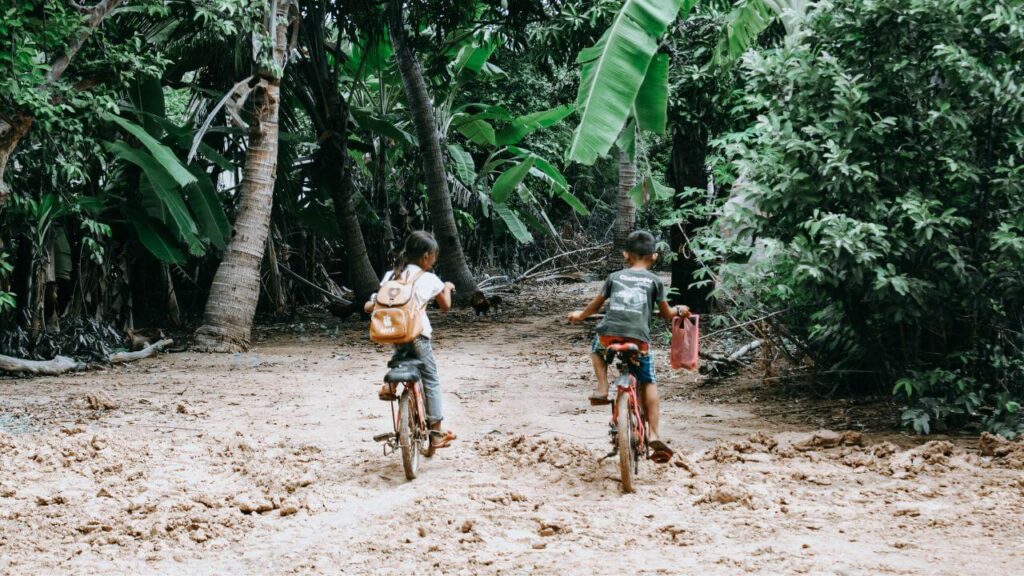
From exploring the diverse natural landscapes of Asia’s rainforests, beaches, and mountains to engaging with the continent’s advanced science museums and astronomical observatories, the journey through Nature and Science Exploration Fun for Kids in Asia offers a rich tapestry of educational and interactive experiences. These activities, ranging from DIY science experiments to nature craft tech-savvy educational apps, educate and entertain, fostering a love for learning in young minds. Furthermore, integrating cultural aspects into these experiences deepens the understanding of Asia’s unique relationship between natural wonders, traditional sciences, and cultural practices. This exploration is a gateway for children to appreciate the interconnectedness of nature, science, and culture, igniting curiosity and inspiring future generations of explorers and innovators. If your kids love history, read this article about the 15 Best Historical Sites for Children in Asia.

